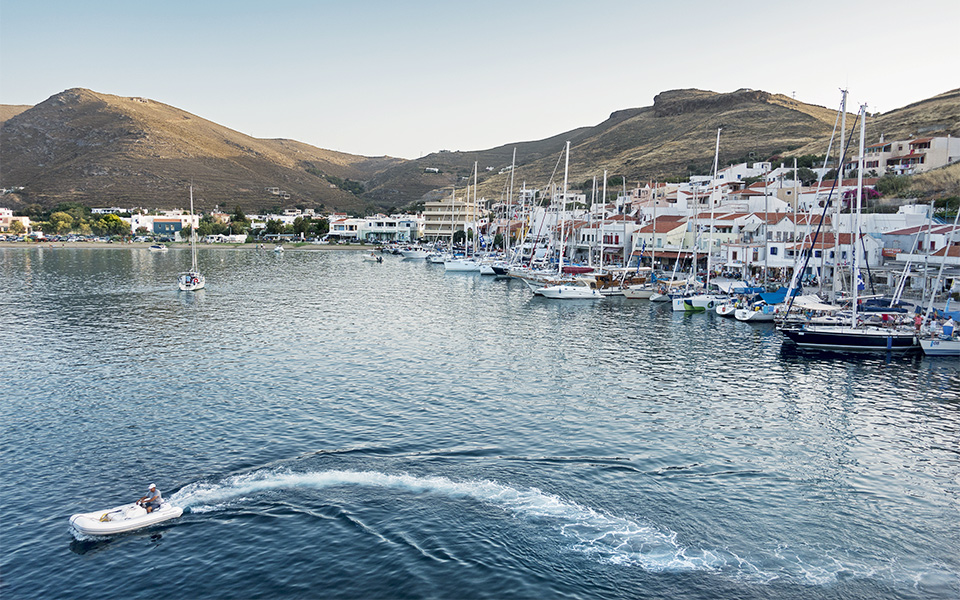As you approach the island of Kea (also known as Tzia) you are greeted by its wild western slopes, the port of Korissia and, in the distance, Ioulida – the island’s capital (or Chora). Pretty and low-key it is among the most charming in the entire Cyclades.
The first impression is that Kea’s landscape is typical of the Cyclades, yet behind this exterior, Kea has a surprisingly unique and varied landscape: oak forests; a few olive trees; rugged rocky slopes interspersed by almond groves and, scattered throughout, tasteful summer homes, many of which have been built by charismatic architects inspired by the simplicity of Kea’s traditional farmhouses built out of local stone.
Overall, the island has managed to maintain a remarkable sense of balance. On the one hand it remains closely connected to nature (roughly 60% of the island’s forests are protected as part of the Natura network) and the traditional practice of raising livestock remains an important economic activity. Yet at the same time it is developing a sophisticated form of tourism, maintaining a discreet cosmopolitanism.
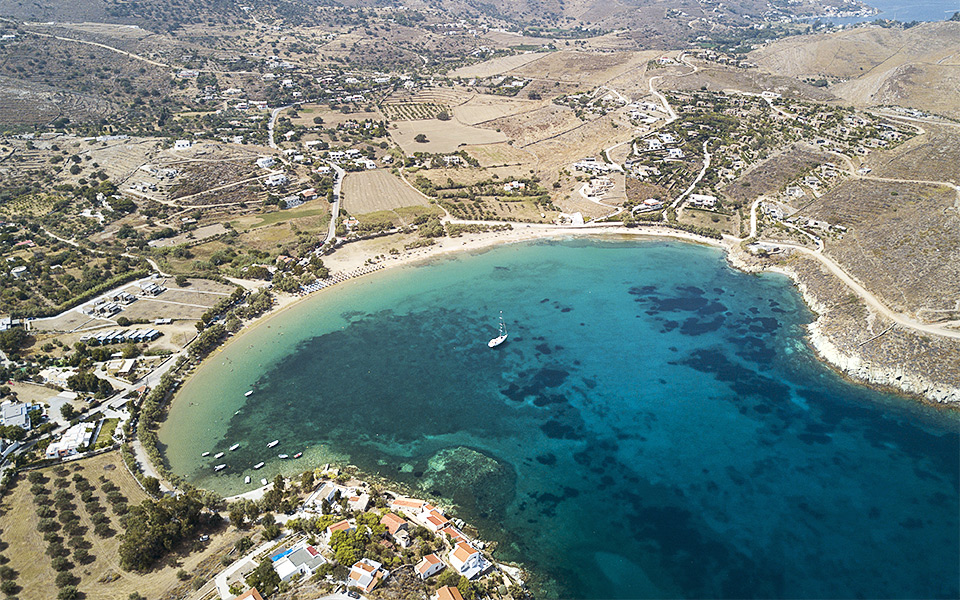
© Marika Tsouderou
Well known figures from the worlds of the arts, journalism and other walks of life from Greece and abroad are among those who have country homes on the island and visit frequently. As the island’s mayor, Yiannis Evangelou, tells us, during the high season the population of Kea does not exceed 6,500 together with the roughly 2,500 permanent residents. While the number of hotel rooms remains limited, in the last three years over 150 luxury villas and another 100 country homes have been added to internet platforms like Booking.com and Airbnb, significantly boosting the number of available beds on the island.
“It is a good thing that more people are coming, even if it has made things more difficult for us who have hotels and guesthouses,” says Marcie Mayer, one of the owners of the agritourism business, Red Tractor Farm. Mayer has also played a key role in resurrecting the commercial exploitation of Kea’s acorns (thus helping to preserve the island’s oak trees), producing acorn cookies which have acquired a dedicated following in Greece and abroad.
In 2012 she also launched the Acorn Initiative which seeks make use of the acorn caps produced on the island by exporting them for use in the tanning industry. This summer arrived to find Kea quietly rejuvenated – and ourselves enjoying the hospitality of Porto Kea Suites in Korissia, dining on the exceptional dishes of its restaurant and lulled to sleep by the sound of the sea.

© Marika Tsouderou
A journey to the four corners of Kea
This year the municipality of Kea has acquired a new comprehensive visual branding, designed by the Karlopoulos & Associates based on symbols found on coins from ancient Tetrapolis – the name of the island in antiquity which derives from the four cities that once flourished here: Korissos, Ioulis, Poiiessa and Karthea.
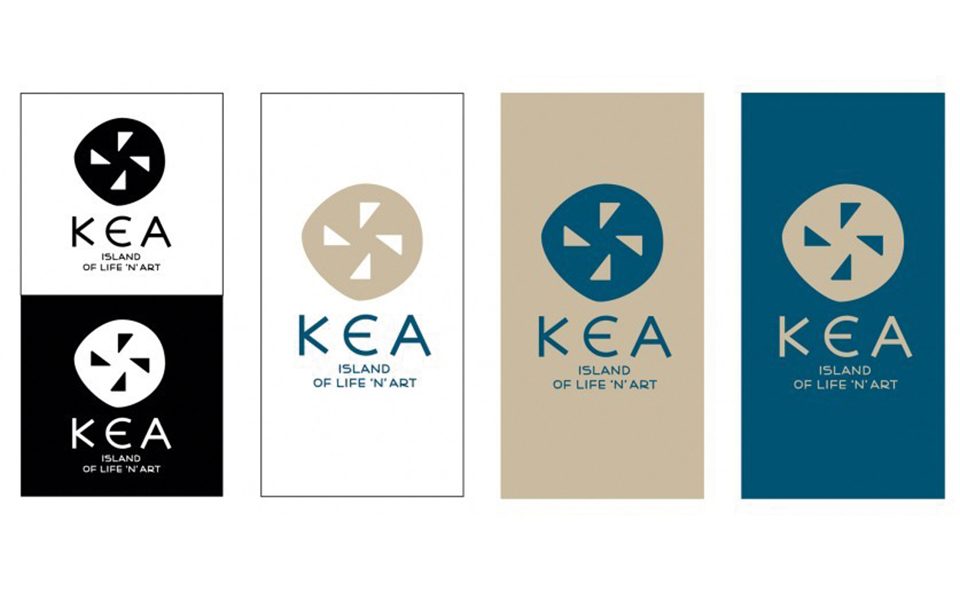
© Marika Tsouderou
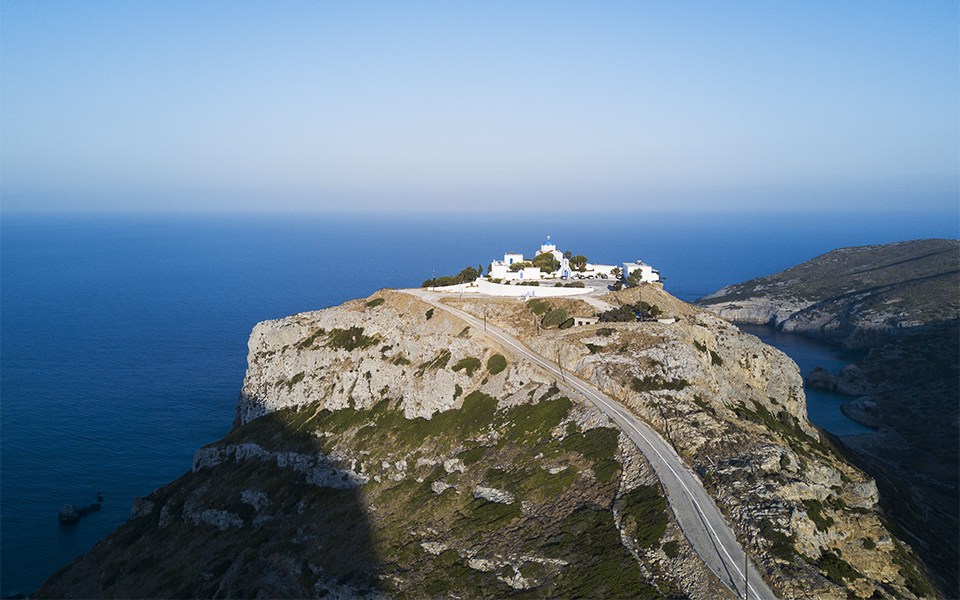
© Marika Tsouderou
Korissos
It was in the port of Korissia (as it is now known) that the famous Kouros of Kea was discovered (a statue of a young man – now on display in the National Archaeological Museum in Athens). Today one finds tavernas, cafes, mini markets, ATMs pharmacies, bakeries and other small shops.
The nearest beaches for a first swim are Marades and Melissaki towards the south. The beach of Xyla is also very pretty, where one can find a few sun loungers for rent as well as a small canteen. Access is via a dirt road (it is said those with country homes near the sea prefer them as they deter the large crowds that tend to arrive with asphalt).
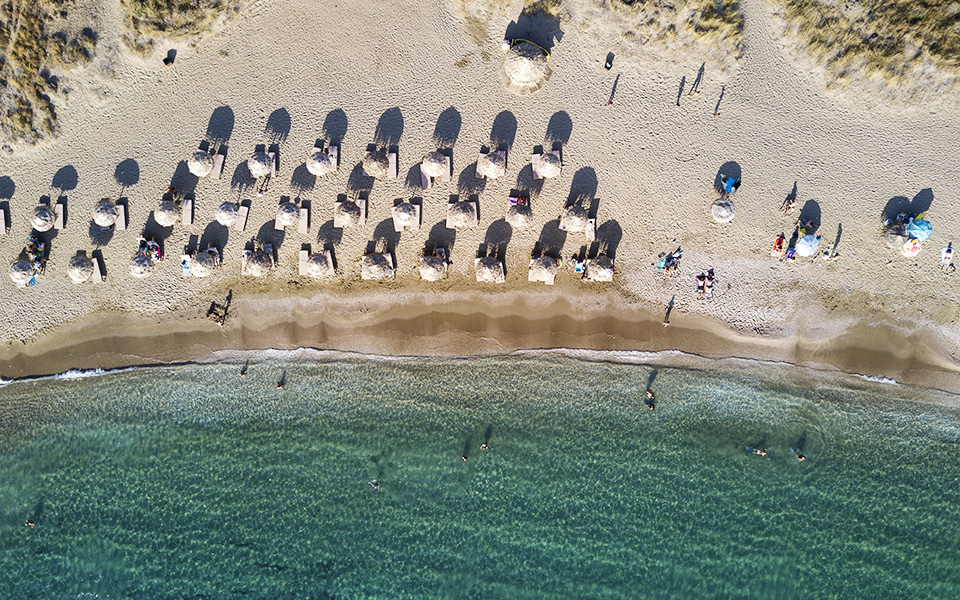
© Marika Tsouderou
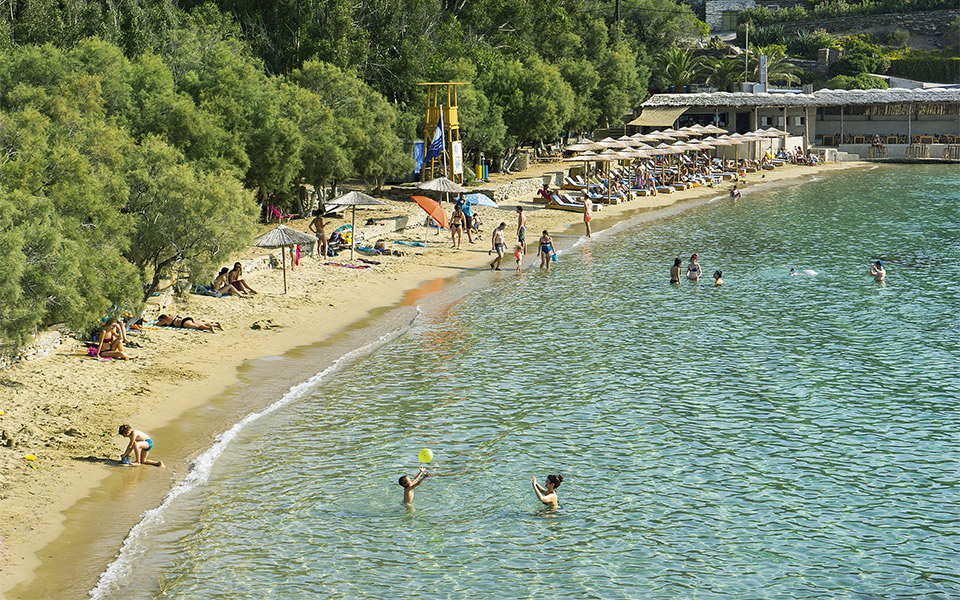
© Marika Tsouderou
Heading north from the port you will come to the lovely swimming spot of Yialiskari, and immediately afterwards, Vourkari – the most happening and nightlife-friendly corner of Kea. A row of cafes and restaurants awaits you, and if you want to party on well into the night head to Vinilio, or the enjoyable balcony of Zeus Faber – an energetic ‘dive bar’ where the art of flirting is still very much alive.
On the opposite side of the bay of Vourkari, in Aghia Eirini, one can see a prehistoric settlement and the ruins of a temple and fortifications that date to the middle of the Bronze Age (2,000 – 1,600 BC), evidence of Kea’s deep history. Otzias, the island’s northernmost bay, features an organized beach which gets quite busy with families and groups when the wind is not too strong. The more adventurous may continue on to the Monastery of Panagia Kastriani and from there to Ioulida.
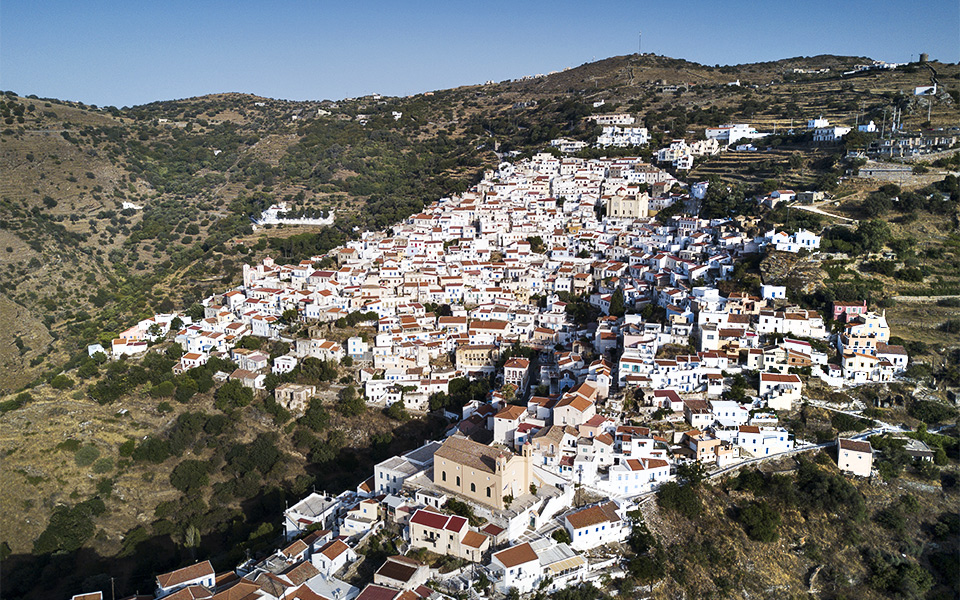
© Marika Tsouderou
Ioulis
Founded in the Archaic Period, Ioulis was the only one of the four ancient cities to be situated in the island’s interior, at a location later occupied by the island’s medieval castle. Today, Ioulida is as beautiful as ever with labyrinthine streets that are a walker’s delight. Fig trees growing here and there, small covered alleys and courtyards filled with herbs, cacti, geraniums as well as the odd bougainvillea all add to its charm.
The village’s small archaeological museum is home to a number of important finds. The oldest of these are found on the second floor and include the exceptional ceramic female statues with their characteristic large breasts.
A short distance before the museum, the newly opened restaurant of Kylix is located on a pretty rooftop and offers modern and creative Greek dishes. Further up in the square of the old town hall, classic tavernas with tables underneath mulberry trees offer traditional island cooking at reasonable prices.
Don't miss:
The Archaeological Museum of Kea (Ioulida, Tel. +30 22880.22079). Open: Tuesday – Sunday 08.00-15.00).
The Museum of the Agricultural, Folk and Cultural Heritage of Kea (Mylopotamos, Tel. +30 22880-2248). Open Monday – Sunday 10.00-14.00 and 18.00 – 21.00)
The Fairy Tale Festival – Greek and Foreign narrators read stories under the plane trees every year in squares and ancient paths of Kea. www.e-mythos.eu.
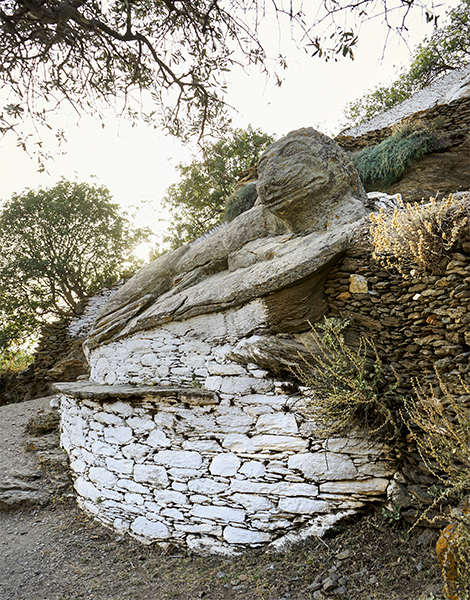
© Marika Tsouderou
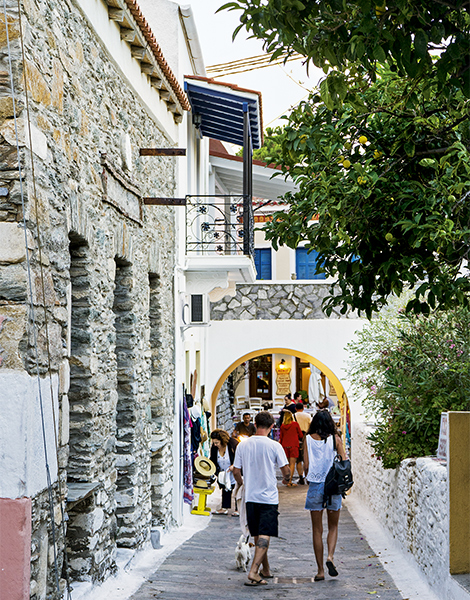
© Marika Tsouderou
For drinks, there is only one choice, unique and legendary. It goes by the name of Leon, invariably has rock music playing and was the first bar on Kea. Further up, carved out into the rock, you will find the sculpted lion that gave the bar its name. A unique work, it is said to have been created in the early Archaic (sometime between the end of the 7th and the early 6th century BC). The lion marks the beginning of the path that links Ioulida with Otzias. It is an easy trail and at the end of it you can enjoy the reward of a refreshing dip.
It is worth noting here that the island has a very interesting network – 65km in total – of well-maintained and often stone-paved paths. Furthermore, this year local businesses, in partnership with the municipality, created a map with five walks around the Chora (#ChoraWalks). Painted markings along the routes will also help ensure you don’t lose your way. For more information, visit the newly launched site destinationkea.com.
From the cross-roads above Ioulida take the road for the beaches on the eastern coast: Spathi, Kalidonihi and Sikamia, with Psathi and Orko further south. All of them are exceptional and will make you forget that you are only an hour away from the port of Lavrio.
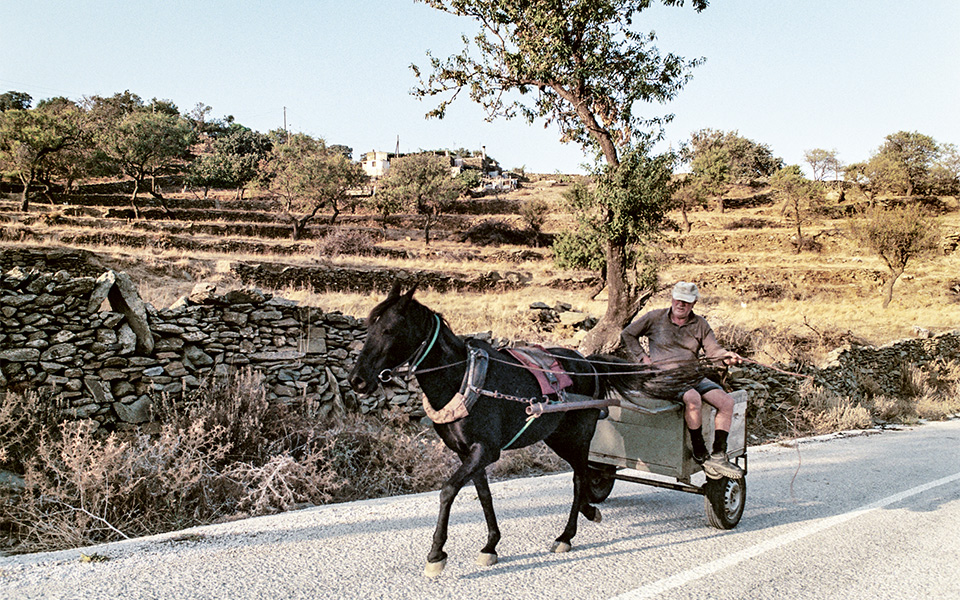
© Marika Tsouderou
Poiiessa
The ancient city was founded around the end of the 6th century BC on the western coast of Kea on the hill of Firon. In its place today stands the village of Pisses with its eponymous beach, to the left of which the remnants of the ancient walls can be seen on the hill. The beach is one of the longest sandy stretches on the island and the site of the only organized campsite.
To the northeast of Pisses, the five-story Tower of Aghia Marina with an initial height of 20 meters (today it is 19 meters tall) was built during the Hellenistic Period and is one of the tallest surviving ancient monuments in the Mediterranean. However for the time being much of the tower is hidden behind scaffolding as preservation work is currently underway.
To the south of Pisses is the beach of Koundouros, which in the 1970s had ferry links with Lavrio and was one of the first areas of the island to be developed touristically. The region toady has the highest concentration of villas and you’ll see numerous private pools, windmills that have been converted into country getaways as well as newer builds. The region is sheltered from the strong northerly winds and among the busiest during peak season but very enjoyable when the island has fewer visitors.
In the nearby, smaller bay now known as Koundouraki, you will find the beach bar of the same name which also features a water-sports center (www.kwsports.gr, Tel. +30 697.374.7473). Heading further south you will come to Kambi and the taverna Manousos. It is in this area that Princess Lalla Salma, wife of King Mohammed VI of Morocco, recently purchased a summer home, adding a dose of royal glamor to Kea’s cosmopolitan crowd.
Where to Eat
Enjoy Greek dishes with modern twists at the restaurant of Porto Kea Suites overseen by Lefteris Lazarou, at the brand new Kylix (Ioulida Tel. +30 693.259.6757) run by chef Nikolas Tsaakaloyiannis, To Spiti Sti Chora (Ioulida +30 22880-29101 www.tospitistihora.gr) by chef Angelos Makris, Seirios (Vourkari Tel. +30 22880-28280) and Vourkarion (Vourkari, Tel. +30 22880.22444), www.vourkarion.gr).
For fish in Vourkari opt for I Strofi Tou Mimi (Tel. +30 22880-21480, www.istrofitoumimi.com) with tables on the sand, and Aristo (Tel +30 22880.21137) which serves lobster pasta and slow-cooked dishes.
Good tavernas with reasonable prices are: Taverna Tis Annas (Otzias, Tel. +30 22880.21137) for fish and slow-cooked dishes, To Steki (Ioulida Tel. +30 22880.22088) for traditional island local dishes, Ton Kalofagadon Ioulida, (Tel. +30 22880-22118, kalofagadon.gr) for slow cooked dishes and roast pig, I Piatsa (Ioulida, Tel. +30 22880.22195) and others.
Meat lovers should try the grill house O Filippas (Korissia, Tel. +30 22880.21690) and in Karthea (Kato Meria, Tel. +30 22880.24101). Also Elenis taverna, To Kambi (Kambi, Tel. +30 22880.31211) and Lagoudera (Korissia, Tel. +30 22880.21977).
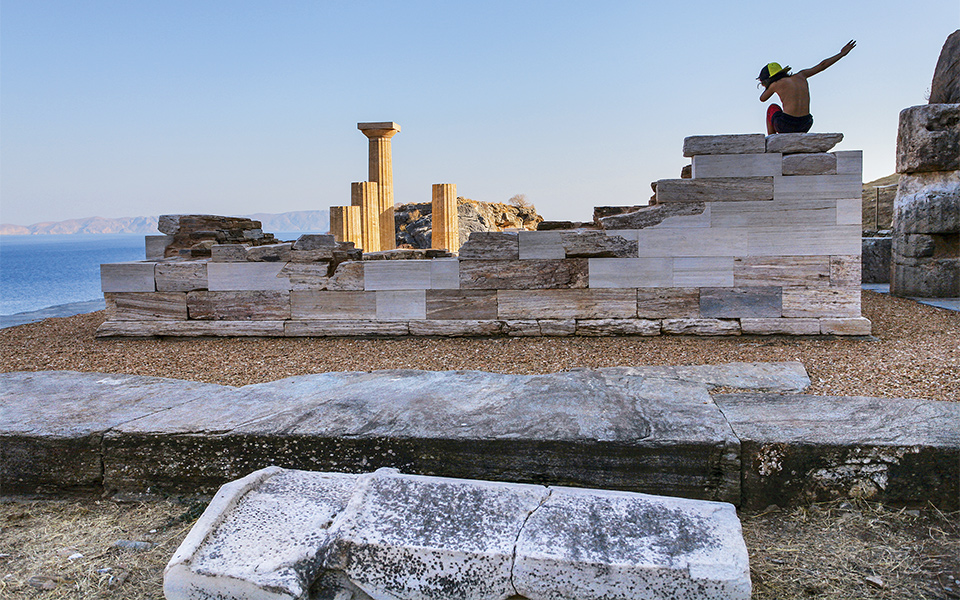
© iStock / Getty Images / Ideal Image
Karthea
The route that remains my personal favorite is that which goes from Ioulida towards the interior of Kea, passing between oak forests, dairy farms, small churches and small villages seemingly untouched by tourism (such as Ellinika), and ends at the ancient coastal city of Karthea. Among the highlights are the ruins of the acropolis, to the north of which was a temple which continues to be referred to that of Athena even though it is not clear which god was worshiped here. You will also find the city’s ancient theater, which has been restored.
The nearby beaches have turquoise, crystal-clear waters. Don’t miss out on a swim at Poles (pronounced POLL-es) or at the beach of Kaliskia. The nearest village to the site of Karthea is Kato Meria. Here – and in the village of Ellinika – I experienced the most authentic moments of my trip: in the first meeting the sylph Alexandra of the general store and the whole crew at the Poularakia meze restaurant, and in the second meeting the strapping, green-eyed Frangiskos who reminds one of an ancient Greek kouros.
Also not to be forgotten: the fiery tsipouro and its accompaniments: loza (a local cured meat), small sun-ripened tomatoes, olives, cheese and bread baked in a wood-fired oven; the conversations about daily and agricultural life on Kea, the smile of young Lefteris who appears more excited by farming than by school, the love for life and the laughter.

